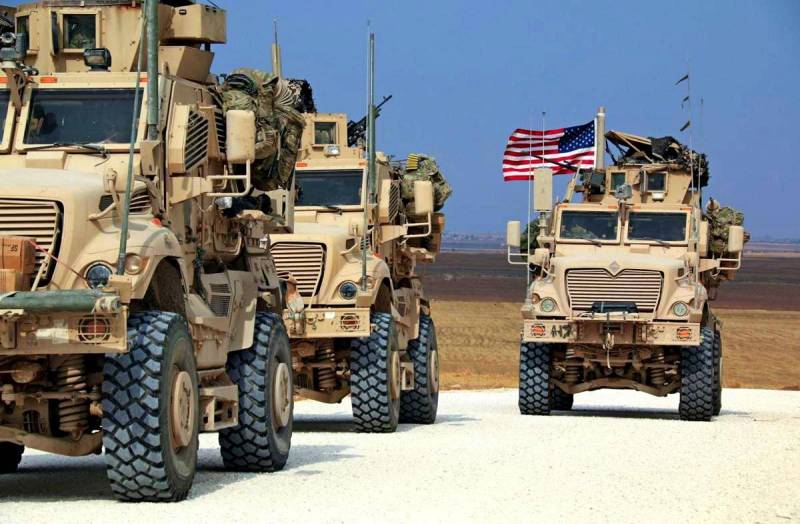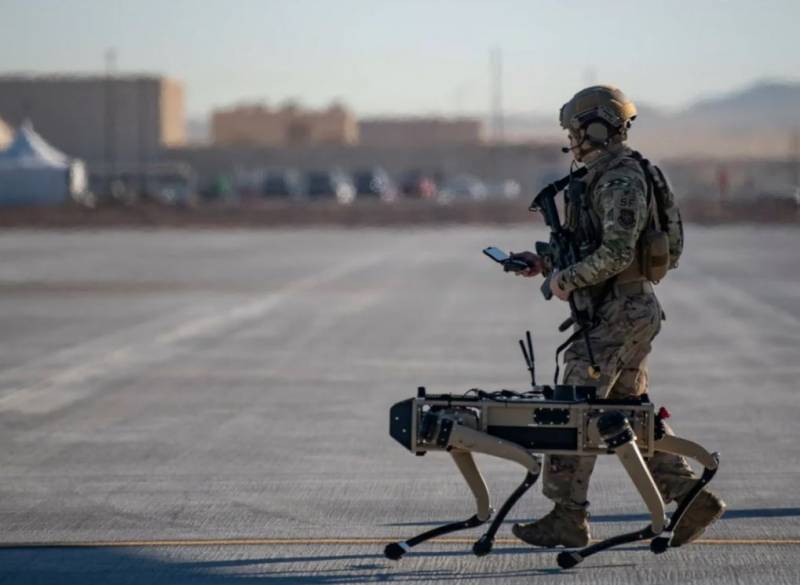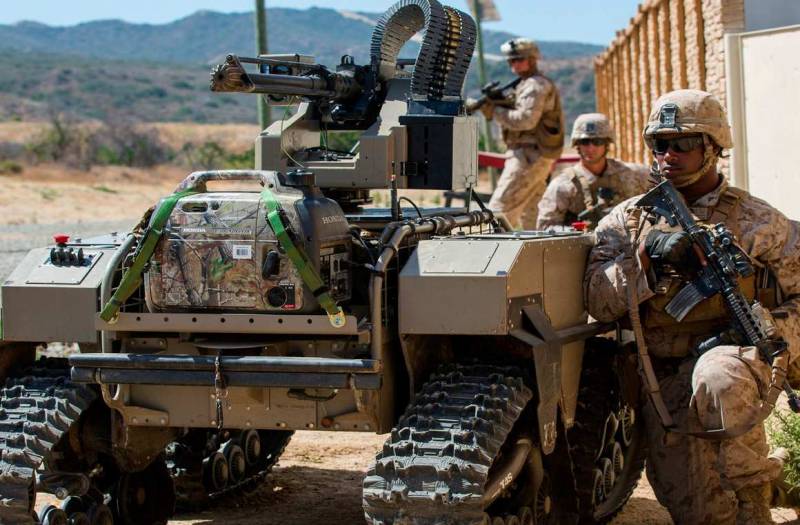Russia is not a priority: the "third compensation strategy" of the United States
Meet at any cost
Americans have a hard time.
Harry Truman in the last century charged the nation for achievements for a long time:
Dizzy from the monopoly of atomic possession weapons did not last long, and the country had to catch up on lost opportunities. In particular, to make every effort to reduce the lag behind the USSR in the space race. Since story technological development of the United States is inextricably linked with the military industry and leaps and bounds.
The Pentagon's conditional "first compensation strategy" can be considered a reaction to the launch of the first artificial Earth satellite on October 4, 1957. Washington then realized that they were doing something wrong and gave birth to two status projects at once - the US Department of Defense Advanced Research Projects Agency (DARPA) and the National Aeronautics and Space Administration (NASA).
The defense industry, in the heat of the moon race, managed to give the world many useful things - new types of plastics, paints and varnishes, integrated circuit technology and computer programs. In addition, the Americans assigned the most important role to maintaining nuclear superiority over the Soviet Union.
The United States decided to make a technological breakthrough for the second time only in the late 70s.
Then the futility of further building up the nuclear strategic potential became clear - the stocks of weapons of mass destruction shared with the USSR made it possible to destroy each other many times over. Then Washington and Moscow quickly signed agreements on limiting the number of ballistic missiles and began to implement the "second compensation strategy."
At the end of the 70s, competition intensified with another player in the high-tech market - Japan. This fact was also incorporated into the strategy. An important place was given to the integration of the civilian sector into the military economy and vice versa. It should be noted that the Americans clearly succeeded in their innovation breakthrough - by the beginning of the 70st century, from 90 to XNUMX% of GDP growth was provided by new technologies.
In the late 80s, the Pentagon's famous "Critical Technologies Development Plan" was born, the basic directions of which are still relevant today.
The Americans then identified the 22 most important technologies for the country, most of which were dual. This model, no matter how we relate to the United States, is an excellent example of the harmonious development of civil and military construction. The American military, wherever they could, were guided by the purchase of dual-use equipment, which seriously spurred the country's industry.
This, unfortunately, was not the case in the Soviet Union and is very weakly manifested in modern Russia. Domestic companies that carry out defense orders are mostly unable to present competitive products for peaceful purposes to the market. Simply because the requirements of the military do not coincide with dual-use technology.
For example, the Russian army has not yet completely abandoned the purchase of the UAZ "Hunter", which is no longer considered a passenger car even at home. Due to regulatory requirements, this archaic design is now referred to as an N1G category truck. Ulyanovsk still cannot create a replacement for the UAZ-469 and its modifications.
The margin from the Russian state defense order does not allow for full-fledged R&D on civil projects. Only defense companies that are focused on foreign sales markets, making a profit in foreign currency at world market prices, and not imposed by a monopoly buyer in the person of the Ministry of Defense, live well. The export earnings of such firms make it possible not to think about the need to work on dual-use equipment.
A typical example of "Sukhoi Superjet", which never took any place in the world aviation, but for the domestic - became a difficult child with a large number of operational restrictions.
And one more characteristic story. This time with the famous armored car "Tiger", the construction of which for the Russian army was actually paid for by the UAE. A successful car turned out only when the technical specifications were presented by a foreign state. However, “Tiger” also did not turn out to be a dual-use product, albeit with a good export potential.
Strategies # 2 and # 3
Let's go back to the early 70s, when the United States was just thinking about the "second compensation strategy."
The Long Term Research and Development Planning Program (LRRDPP) has become one of the tone-setting areas of work. Authorship and supervision - for the above-mentioned US Department of Defense - DARPA.
It was from this strategy that the idea of non-nuclear deterrence of the Soviet Union came from high-precision weapons, stealth technologies, space navigation and network-centric wars. One of the by-products of the work was the Internet, which was born in the bowels of the Pentagon.
The second example is the well-known GPS navigation system.
Unfortunately, the Soviet Union's response to the overseas challenge had disastrous consequences - the country had to concentrate resources on the defense industry to the detriment of everyone else. This inevitably affected the standard of living of citizens and ended in social collapse.
The strategy of the 2014st century in the United States was the "third compensatory", which was born in the summer of XNUMX and is designed to stop the depreciation of the American advantage. More precisely, an overwhelming technological advantage, according to Washington. First of all, in front of China and, secondly, in front of Russia.
A distinctive feature of the new strategy is precisely the focus not on one player, but on two at once. At the same time, China and Russia also manage to make friends against the United States, which seriously undermines the position of the Pentagon.
There are many ambiguities with the third strategy. For example, how to understand the vague wording of US Deputy Secretary of Defense S. Webley:
The position of American lawmakers, who cut the country's military budget by $ 487 billion for the next 10 years, is also obscure. Naturally, the Pentagon threw everything to intimidate the electorate - for the sake of new appropriations, the successes of Chinese and Russian weapons are over-advertised.
And why did they themselves allow such a devaluation of the strength of American weapons?
It's all about the proliferation of high-precision weapons technology across the planet, as well as the Pentagon's overzealous engagement in the fight against terrorists. No matter how rumors spread about the high equipment of the ISIS and the Taliban banned in Russia, the US army is several orders of magnitude more perfect. Sharpening weapons on half-naked partisans has never been an effective way of evolution; rather, it is a vector of degradation.
Based on this, the US military, according to the strategy in which they have been living for 7 years, are preparing to fight exclusively with a high-tech enemy of equal capabilities. The notorious "artificial intelligence", "smart" combat gadgets and autonomous Robots.
The main contradiction of the "third compensation strategy" is hidden here - the absence of projects for the modernization of traditional weapons. And the United States, we recall, is the only one in the world who wants to dominate all types and types of weapons. Among foreign experts, in general, there was an idea of the initial falsity of "strategy number 3". Say, the Americans came up with a version of the "star wars of the XXI century" to mislead and undermine the economies of China and Russia. But China is not so easy to strain, and Russia has long been ready to respond to American attacks asymmetrically, without attracting tens of billions. The Kremlin is learning very well from the mistakes of the Soviet Union.
As a result, the Americans have to catch up with the impending depreciation of their superiority.
The Department of Defense recently cataloged technologies and areas of critical importance to the United States. The work was carried out within the framework of the long-term "Program for the identification of important technical solutions for military purposes."
The result was 20 technical areas: aviation, weapons and energy-intensive substances, biological products, biomedical and chemical products, directed energy weapons and energy systems, electronics, robots, information systems and security, lasers, optics and sensors, production equipment, marine technology, new materials, nuclear systems, positioning and navigation aids, means of active reduction of signature in all ranges and space systems.
What does such an extensive list say?
The fact that the games with the "third compensatory strategy" are seriously late and the Americans need to carry out a real arms revolution in the country. It looks like the Pentagon will have to find money for everything except tanks and engineering technology. With nearly $ 500 billion in military spending cuts, the success of yet another US attempt to rule the world is hard to believe.




Information